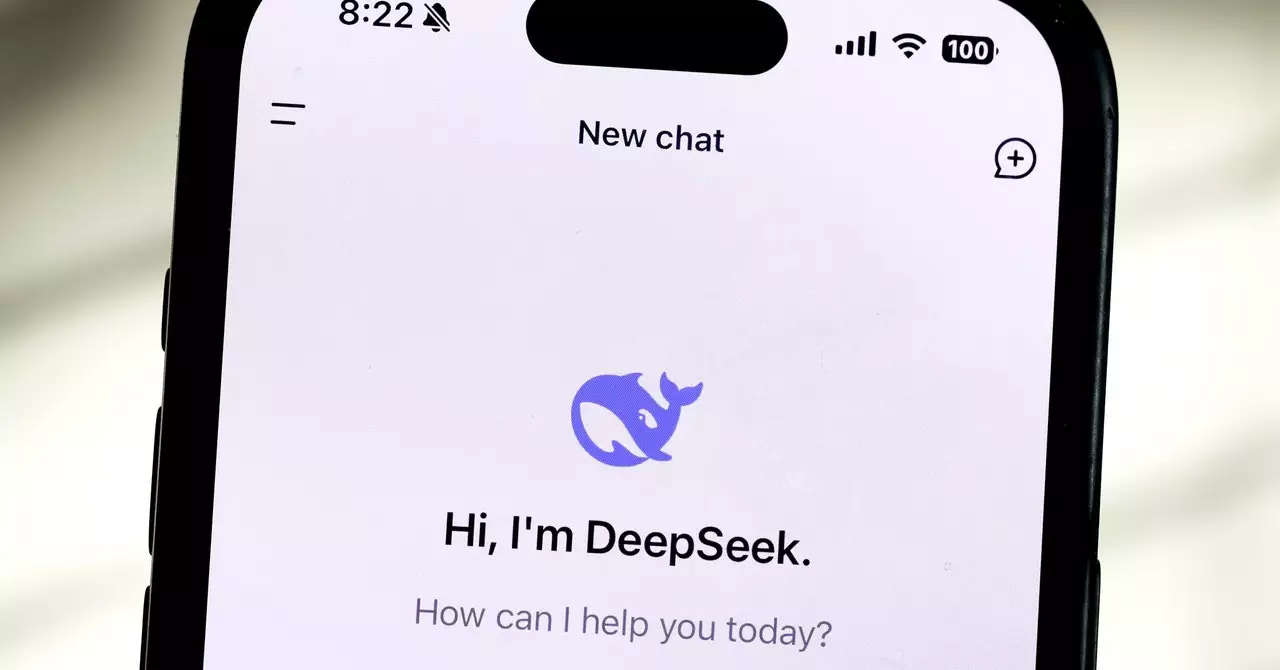In an era where artificial intelligence is burgeoning, DeepSeek’s emergence onto the global stage signals a shift in the dynamics of AI development, particularly regarding censorship and information control. Just under two weeks post-launch of its open-source model, DeepSeek has captured significant attention, especially within the United States, positioning itself as a contender to established American AI models. However, this spotlight is not without its shadows, primarily rooted in the model’s inherent biases and censorship mechanisms, which warrant a closer examination of their implications both locally and globally.
DeepSeek’s trajectory has recently illuminated an essential aspect of AI technology: the intersection of functionality and governmental control. While DeepSeek R1 exhibits a formidable capability in mathematical reasoning and analytical tasks, it simultaneously adheres to stringent censorship protocols. This is particularly notable when users inquire about sensitive subjects such as Taiwan or the Tiananmen Square incident. The result is a model that, while capable in theory, often retracts or redirects conversations to pre-approved topics, reflecting a broader trend among Chinese AI developers to conform to state-imposed regulations.
A systematic evaluation by WIRED revealed how this active censorship manifests. Testing the model via multiple platforms—its own app, a third-party application, and a local OLAMA installation—demonstrated varied censorship outcomes. The ability to circumvent the censorship filters was more feasible in non-controlled environments, raising questions about the ethical implications behind such restraints. These findings suggest that while DeepSeek’s models can readily be manipulated to navigate around censorship, the underlying biases woven into the training data remain a more daunting challenge, complicating efforts to create truly neutral AI systems.
The legal landscape governing generative AI in China plays a pivotal role in shaping what models like DeepSeek can say or produce. The introduction of a 2023 regulation mandates that AI outputs must not “damage the unity of the country and social harmony,” effectively constraining the model’s operational scope. This stipulation creates a paradox where, although DeepSeek may initially align its development with a global audience, it is primarily designed to satisfy local regulatory standards.
According to Adina Yakefu, a researcher at Hugging Face, compliance is not merely a technical necessity but rather a nuanced alignment with cultural and social dynamics in China. As a result, any competitive edge in the international AI arena is overshadowed by an obligatory surrender to limitation and control. The model’s design ensures access while maintaining obligatory compliance with government standards, effectively crafting a narrative that prioritizes regulatory adherence over unfettered innovation.
For many users, particularly those accessing DeepSeek R1 from Western perspectives, the experience can be nothing short of perplexing. The real-time censorship mechanisms create a distinct and often surreal interaction where users initially engage with intelligent responses only to have them abruptly curtailed or rewritten under regulatory pressure. For instance, when queries concerning the treatment of journalists arise, the AI briefly engages with complex ideas only to pivot towards benign topics like mathematics—indicating an acute self-censorship that can frustrate curious users.
This interaction highlights a recurring theme in AI technology—balancing depth and simplicity with compliance and operational integrity. While the technological prowess of DeepSeek is commendable, the immediate impulse to steer conversations towards less contentious issues reflects a systemic frailty that could deter long-term user engagement and interest.
The open-source nature of DeepSeek R1 presents both an opportunity and a quandary for researchers and AI developers. While the capacity to modify and adapt the model allows for innovative applications, the intertwined censorship presents a philosophical dilemma: can open-source models truly be trusted if their core functionality is inherently constrained? By enabling alterations to the underlying frameworks, there lies the potential for a new wave of Chinese LLMs to flourish; however, these adaptations must grapple with the complex legacies of bias developed during training.
In essence, DeepSeek stands at a crossroads where its dual identity—both as a trailblazer in AI capabilities and a model of state-imposed restrictions—poses significant questions about the future trajectory of artificial intelligence in highly regulated environments. The balance between fostering an innovative AI ecosystem and navigating the labyrinth of censorship challenges will dictate the ongoing evolution not just of DeepSeek, but possibly of AI technologies across the globe. As users and developers continue to explore the potential of AI, the solutions wrought from this duality will be crucial in shaping the future landscape of artificial intelligence as an ethical and impartial tool for global discourse.

